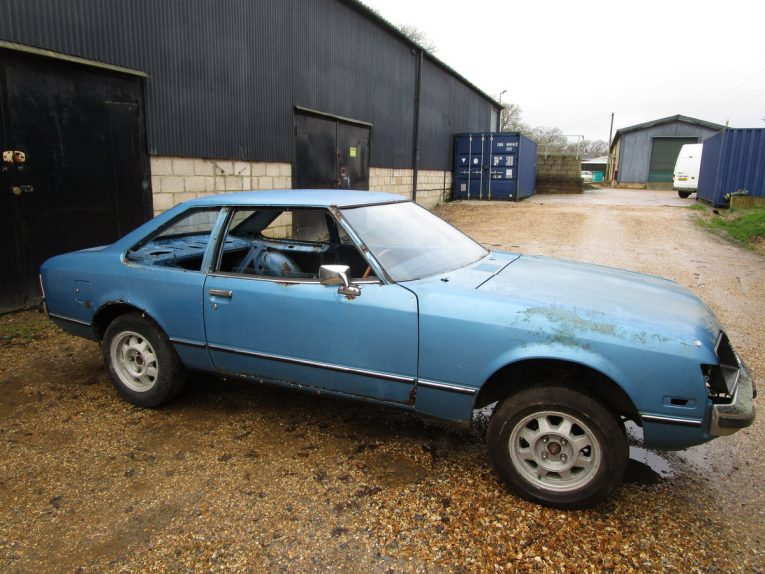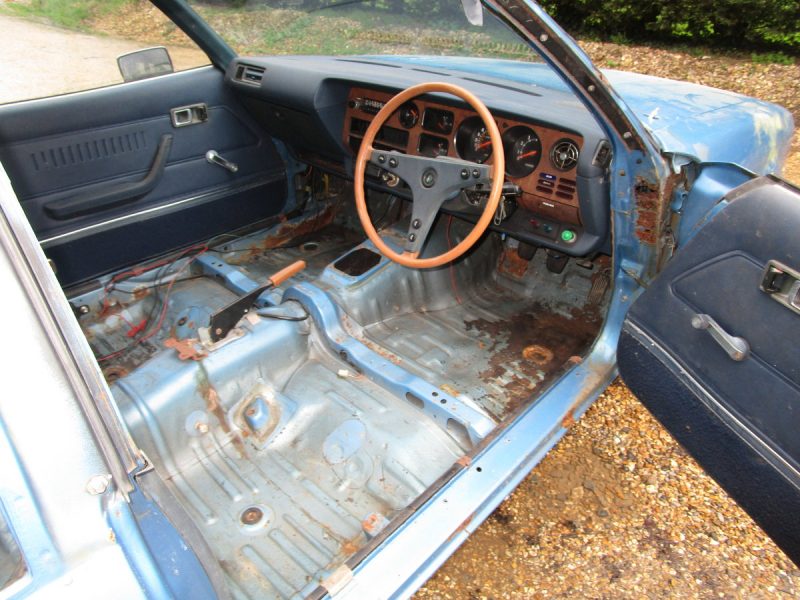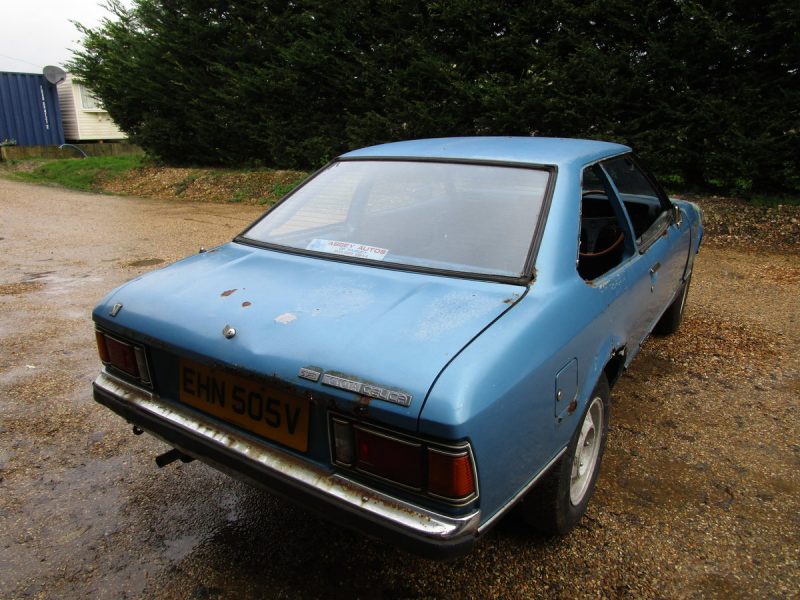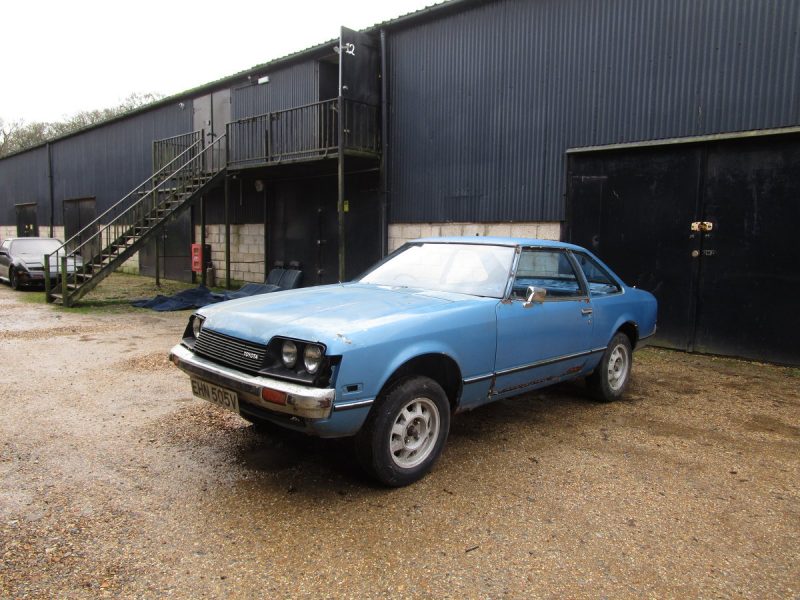1979 Toyota Celica 1600ST – Project Profile

The Japanese sports car invasion of the 1970s was an excellent thing. Prior to this, all we had was a collection of cars that were as much tweed as they were metal. Then the land of the rising sun rocked up and brought with it a whole host of exciting machines. They were handsome, they were brightly coloured, they were built to a standard that was unfathomably good, they were fast and they boasted the kind of handling prowess that we had only dreamed of. The Japanese sports cars reminded us of what a sports car could really be. This was largely due to the fact that, unlike the offerings from home, these cars weren’t delicate. They were tough, they were reliable and they were safe. Prior to their arrival, sports cars had to be a compromise. But not any more.
There are a lot of Japanese car brands, but the one that has been at the forefront since way back when is Toyota. It was one of the first to hit our shores, and its Celica model was the one that really excited us. So much so, we developed a love affair with it that lasted until the 2000s when Toyota ended production. It’s a car that has been through many models and changes. It’s the ‘70s cars that capture our imaginations the most though, which brings us neatly to this week’s project of choice.
What is it?
What you’re looking at here is a second-generation Toyota Celica. This model was available in two body styles. There was the Liftback, which was basically a two-door hatch, and then there was the car you’re looking at here, the arguably more handsome Notchback, which was a more conventional two-door coupe. This is, these days, the rarer of the two. Not that either is exactly high in numbers to begin with.
It is, admittedly, the baby of the range given that it’s the ST1600, which means an inline-four 1,588cc naturally-aspirated engine mated to a five-speed transmission. It’s not quite got the pep of the 2.0 cars, but it has that lovely, crisp manual transmission driving the ‘sports car’ wheels, so that’s all that matters. Don’t think of it as slow, think of it as ‘points-preventing’.
Once up and together again, this second-generation Toyota Celica will be a rare, handsome and wonderfully desirable classic coupe, but one that you can use every day should you choose. Though being an old Japanese car, we would suggest you carry out lots of rust-proofing! Get that done, though, and you’ll have a belting machine.
Why is it a project?
Well, there are many reasons. The first would be the fact the car is currently in kit form. The engine is out, the interior is out, various bits of trim aren’t fitted. Instead, it’s just a Celica-shaped bit of metal and a lot of parts. Though, don’t fret. Apparently, the car was a project that was started by another party, however, for reasons undisclosed, they were unable to make a proper start on it. The interior has been stored properly, and in the dry. All the parts seem to have been removed carefully as has the engine, which doesn’t look like it’s been dropped off the back of a wagon or stored in a pond or anything like that.
In stripping the car, the previous owner has uncovered just what needs to be done, and frankly, it’s a lot. From what we can see, the sills (inner and outer) the firewall and the A-pillars all need some work. Then there are the doors (though it comes with a rust free pair) and the rear arches. We would also be confident in saying the rear floor is going to need some work, and valances, too. It’s going to be a veritable marathon with the MIG, that’s for sure.
Is it worth doing? Yes. You’re going to need to be a dab hand at fabrication, make no mistake – panels aren’t exactly off-the-shelf for this model – but persevere and you’ll have a wonderful car at the end of it. A handsome, reliable machine that will turn heads at every given opportunity. And who doesn’t like the sound of that?
Or, of course, given that so much fabrication is needed, you could go down the period rally car route. But don’t let us put ideas like that in your head (do it, you know you want to).
Five things to look for:
1) Rust
As we’ve covered above, there is a lot of rust to deal with. Sadly, it’s common in Japanese cars of this era, as rust protection wasn’t something they excelled in. You need to look at this car and only commit if you have the skills, or the pockets to get it done.
2) Interior Trim
Yes, the interior has been removed and according to the vendor, it’s be stored carefully. However, that doesn’t mean it’s all complete. You want to sift through what’s there, work out what’s not and go from there. Replacement trim is going to be very hard to find.
3) Mechanical Parts
Same with the mechanical parts. Happily, a lot of it is easy to find, however, it’s more helpful if it’s there to begin with.
4) Engine
Check the engine turns over. You’re going to want to rebuild it anyway, but it’s good if it’s not locked up.
5) Glass
Again, given the rarity of this model, glass is going to be hard to find, especially for the rear quarter windows and the rear screen itself. The only glass in the car is the front screen, so what about the rest, and what sort of condition is it in?
What should you do with it?
When we first started to write this, we were all for going down the factory condition restoration route. However, there are so many variables at play like the trim and glass and any potential missing parts that we’ve changed our mind.
The second-generation Celica was never a big car in motorsport, whereas other generations were. So how about changing that, and building this into the rally car or track car it never was? Full body restoration, full cage, buckets, lightweight race wheels, Toyota team livery and of course, a bigger engine. Maybe a four-cylinder turbocharged unit, but from the Toyota stable of course. Yeah, that would be something special.





